How to deal with a cruciferous flea on cabbage and radishes: measures for the prevention and control of leaf-eating pests
If you notice small holes on young leaves of radish or cabbage, then take a closer look and, most likely, you will see black bugs.
Next, you will learn what to do if cruciferous fleas attacked radishes or cabbage, what preventive measures are and how to deal with this dangerous pest of all cruciferous crops.
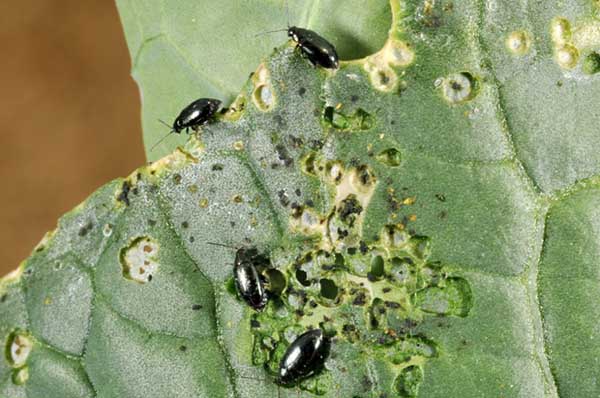
Content
Cruciferous fleas: varieties and harmfulness
Cruciferous fleas are pests (insects) from the leaf beetle family, which include the flea is wavy, light-footed, notched and black (blue).
Moreover the most common the pest is precisely black (blue) cruciferous flea.
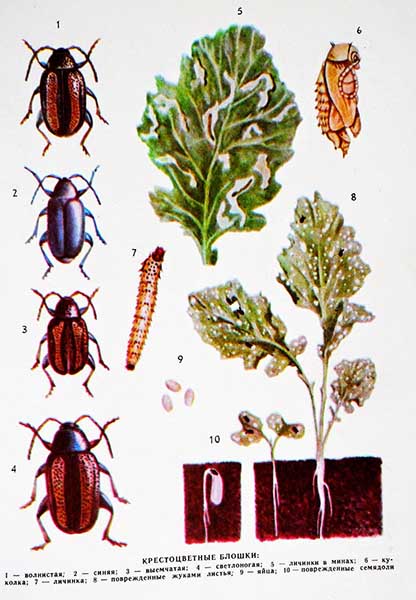
Cruciferous fleas, you guessed it, damage (gnawing holes in the leaves) precisely cruciferous plants (cabbage, radish, radish, turnip, daikon, rutabaga, horseradish, as well as mustard, oil radish, rape, etc.).
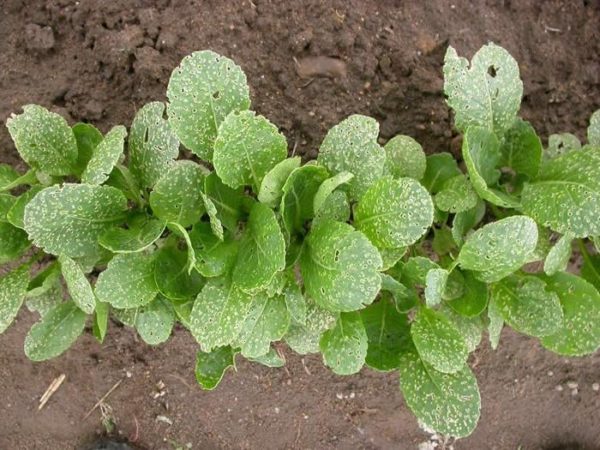
After wintering, the beetles crawl out of the soil and begin to settle on early shoots of cruciferous crops (as a rule, first on green manure - mustard, rape, Shrovetide radish), then they are already moving on to radish and cabbage seedlings (cultivated plants).
After mating, the females lay their eggs in the soil near the cruciferous plants. The emerging larvae develop directly on small lateral roots, then pupate. Later (about July) a new generation of beetles emerges.
What is the harmfulness of cruciferous flea beetles?
- Cruciferous fleas in the imago stage (adults beetles) damage (gnawing through) the leaves and stems of the plant,
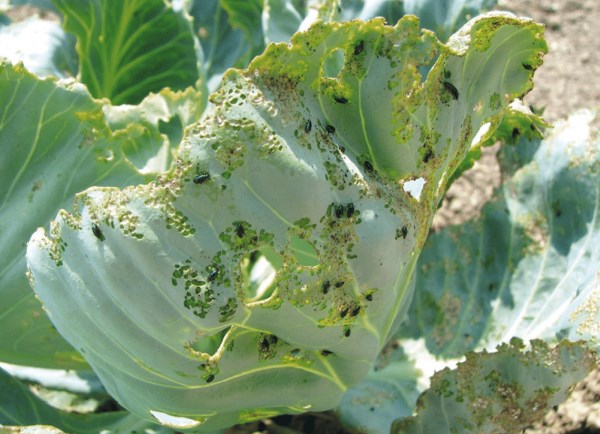
- and their larvae — small lateral roots.
In this case, it is the beetles that inflict the main damage, damaging the young shoots of radish and cabbage in spring.
Thus, the cruciferous flea strongly inhibits the plants (damaging the leaves), and can also almost completely destroy the seedlings.
Agrotechnical control and prevention measures
To reduce the likelihood of cabbage, radish, turnip and radish being affected by cruciferous blocks, the following agrotechnical measures must be taken into account:
- Observe the rules of crop rotation and crop rotation, in other words, do not plant cruciferous crops in one place for several years in a row (including not planting green manure plants).
Often due to the fact that some gardeners are overly addicted to planting cruciferous siderates, for example, regularly sowing mustard, rape and / or oil radish, there are direct invasions of cruciferous fleas on the site.
Accordingly, you need to sow other green manure.
- Destroy weeds (weeds) the cruciferous family (for example, getting rid of the shepherd's purse).
- Loosen and dig up the soil in autumn and spring.
- Spend early sowing of radish (before the flea begins to fly) or, for example, plant it later.
- As you know, the cruciferous flea is especially active in sunny (warm) and dry weather, so it is recommended regularly water (sprinkle) and shade seedlings in hot weather.
- Cover crops and seedlings with non-woven material - agrofibre (spunbond)so that physical fleas cannot encroach on the leaves.
However! Shelter makes sense only if you planted cabbage in a garden where cruciferous crops did not grow before, because beetles hibernate in the soil.
How to protect radishes and cabbage from a cruciferous flea: how to treat it, what drugs
Chemicals
For application to the soil surface in the area of the root collar with simultaneous embedding when planting seedlings:
- Pochin (Diazinon, a systemic insecticide of intestinal action).
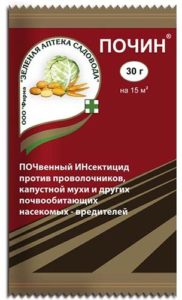
In general, in a similar way, you can apply Zemlin, Terradox and other products based on Diazinonwhich are commonly used against the bear.
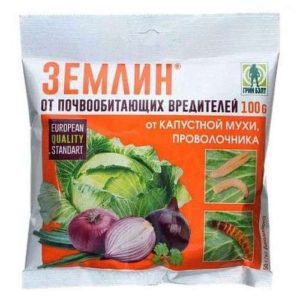
For spraying during the growing season:
- Decis Profi (Deltamethrin, enteric insecticide).
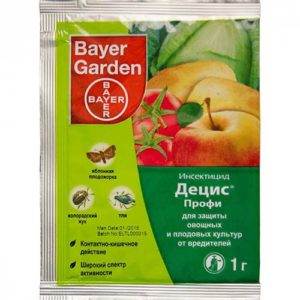
- Karate Zeon (Lambda Cyhalothrin, insecticide of intestinal action).
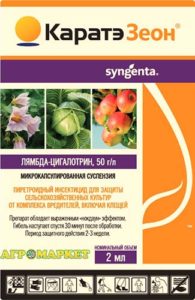
In addition, you can use other drugs based on Lambda-cyhalothrin: Karachar, Lambda-S, Lightning, Altyn, Sensei, Gladiator.
Interesting! Farms also carry out pre-sowing seed treatment, using special dressing agents, for example, Imidalite (Bifenthrin (Talstar) and Imidacloprid, systemic intestinal contact insectoacaricide).
Tobacco dust and wood ash
If you do not want to use chemical insecticides, then it is quite possible to use herbal products:
- Tobacco dust (Nicotine, insecticide of intestinal action).
You can just dust (dust) plants (immediately after germination and leaf formation or after planting seedlings), and it is desirable precisely on wet leaves.
Either spray infusion or decoction.
Dusting and / or spraying will need to be repeated periodically.
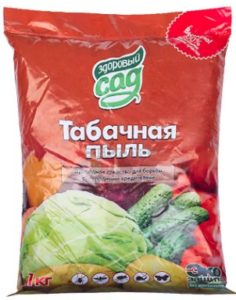
By the way! Similar to tobacco dust, you can use it simply wood ash.
Moreover, it is ideal mix 1 to 1 tobacco dust and wood ash .
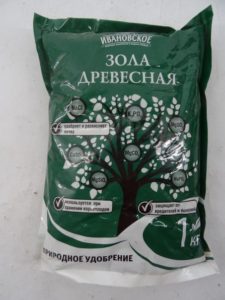
Tabazol - this is a mixture of tobacco dust and wood ash.
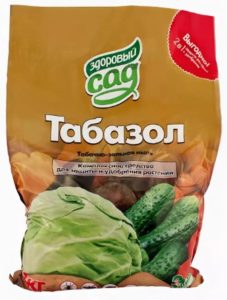
- ExtraFlor (tobacco extract).
In fact, it is nothing more than tobacco dust, only in a different package.
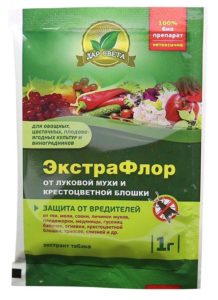
Folk remedies
- Alternatively, suitable for pollination of bushes red hot pepper.
- You can lay out between cabbage seedlings sagebrush, which will drive away all pests.
Interesting! And the author of the channel "GARDEN, GARDEN, WITH YOUR OWN HANDS" suggests using a solution to scare off fleas valerian (25 ml of pharmacy tincture per 3 liters of water).

